
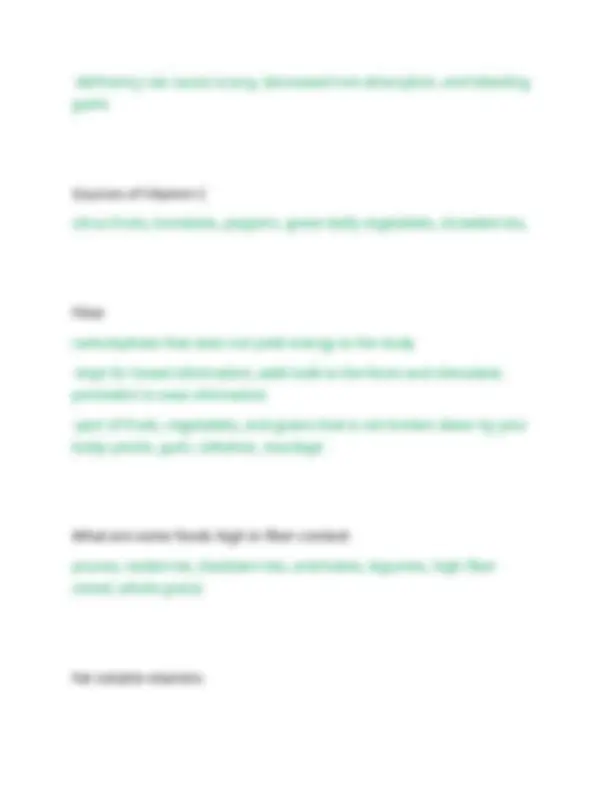
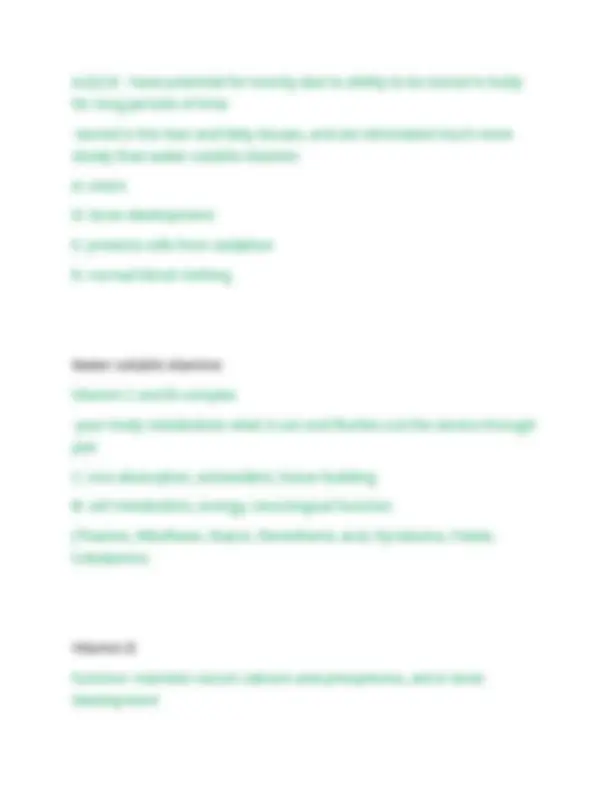
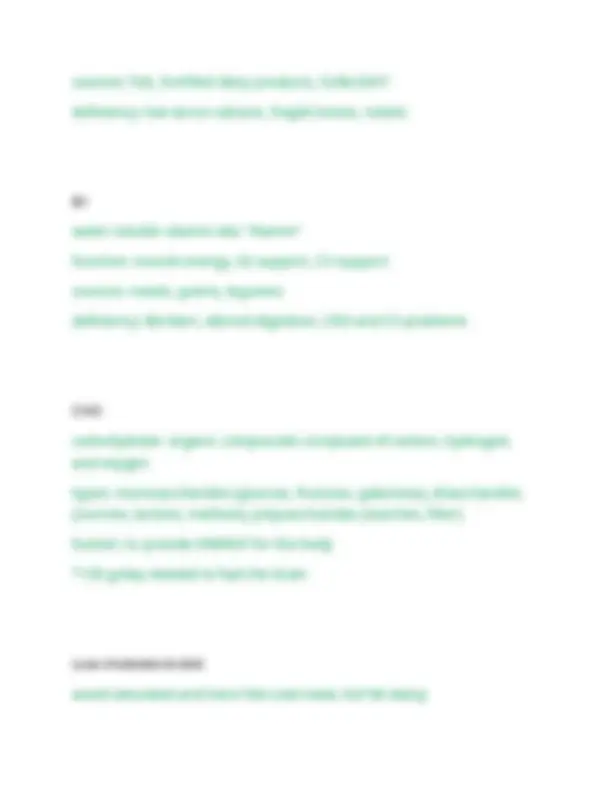
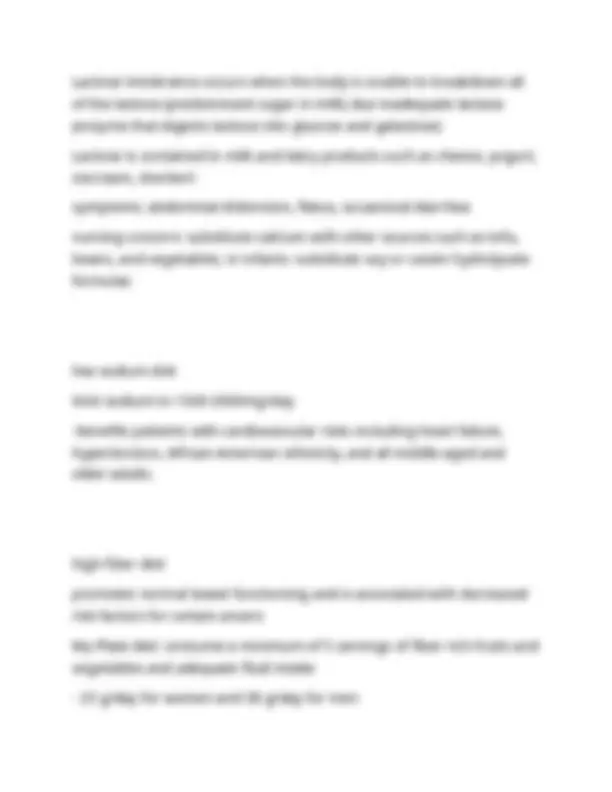
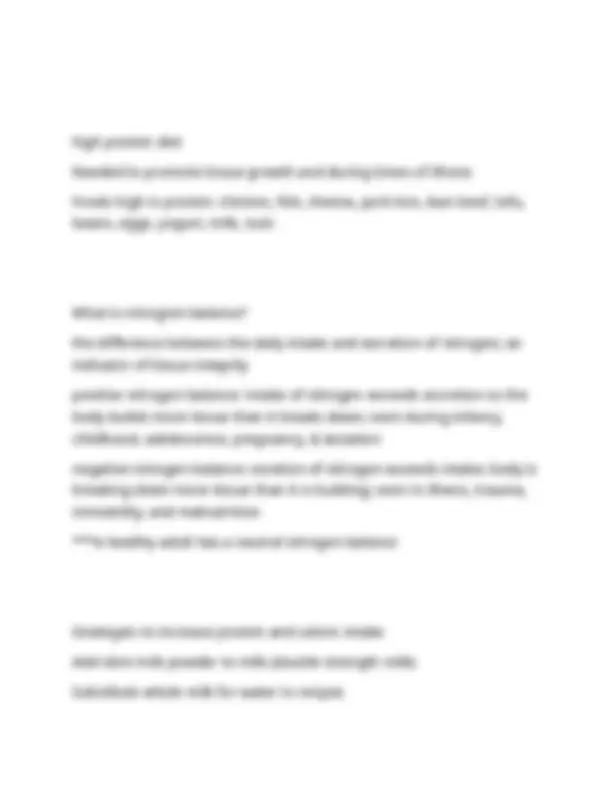
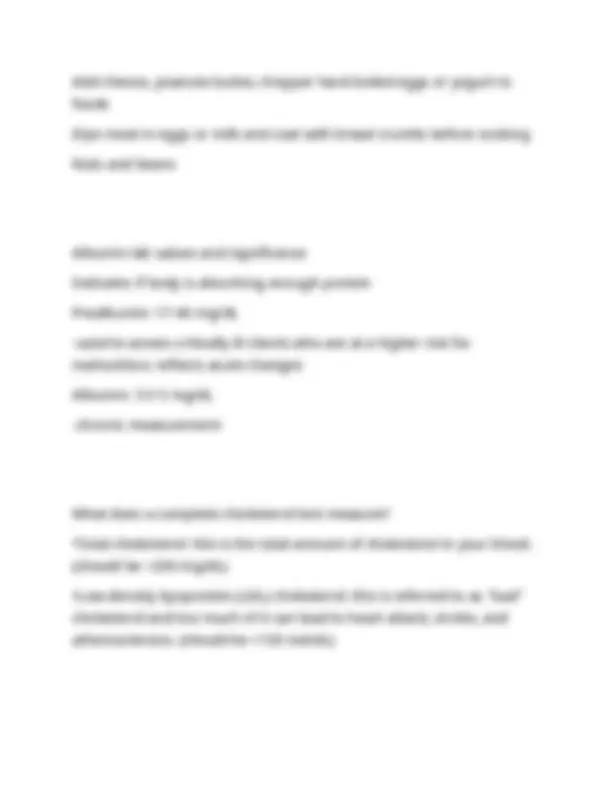
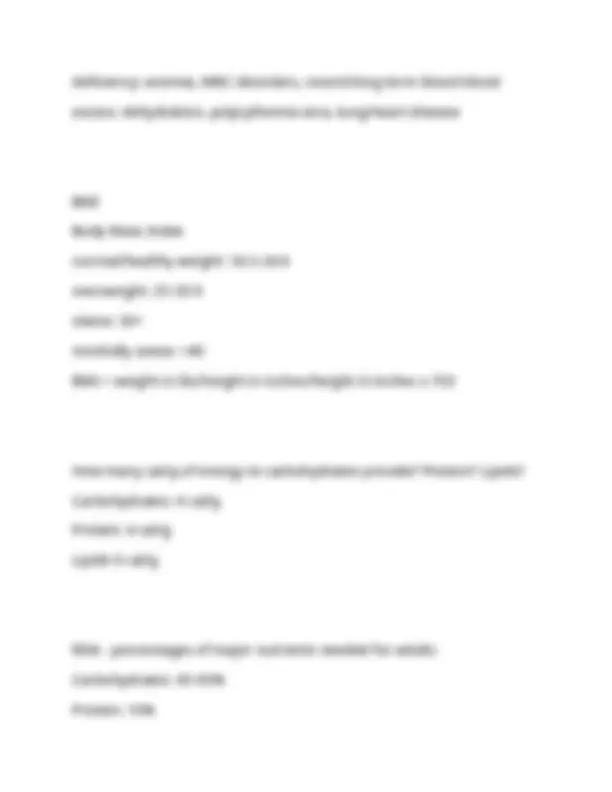
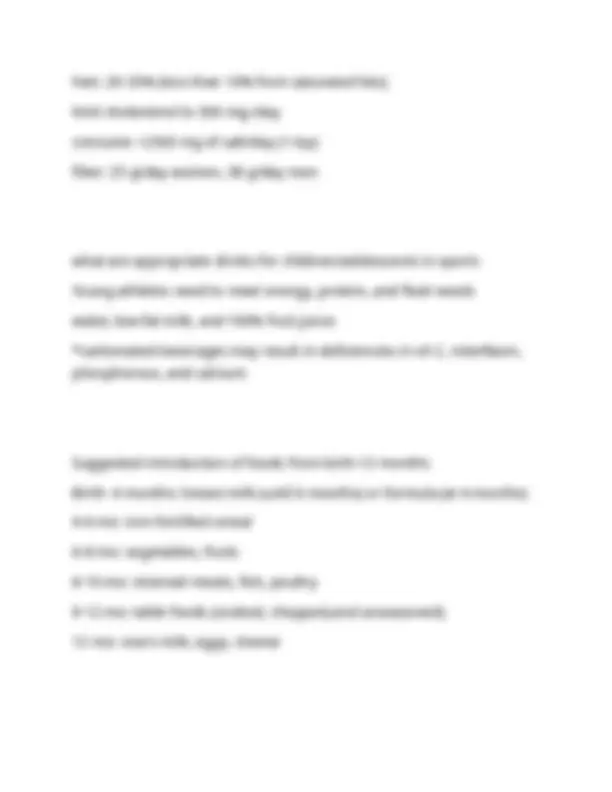
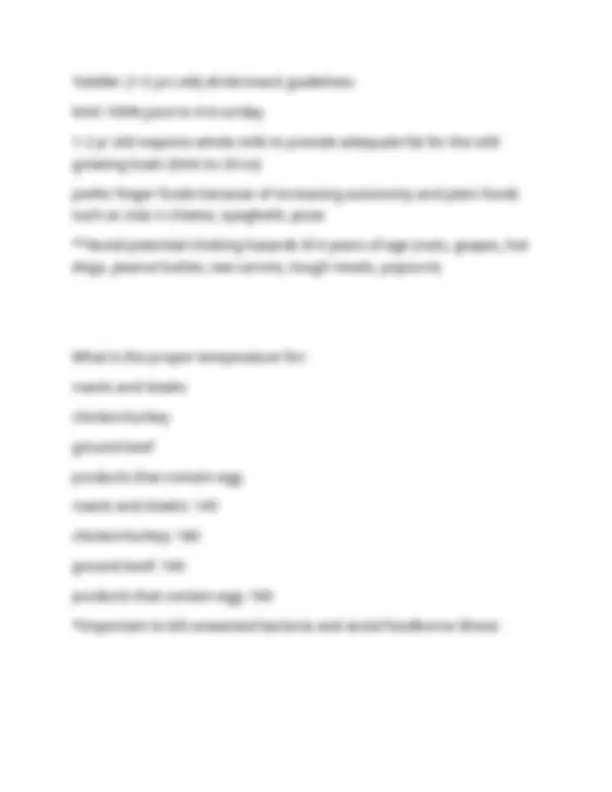
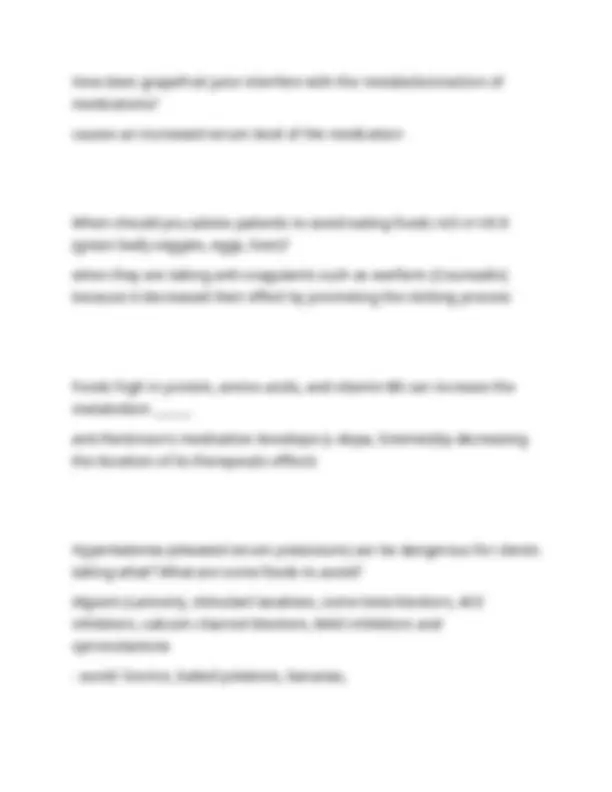
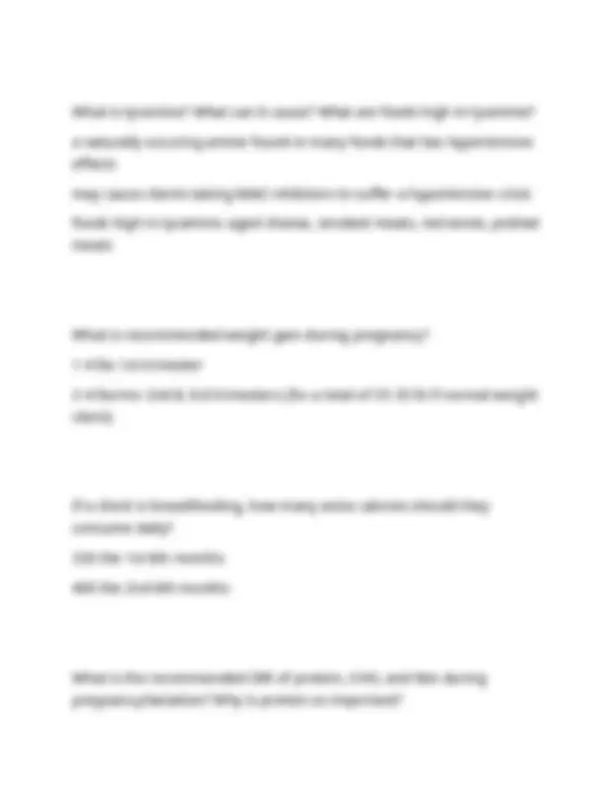
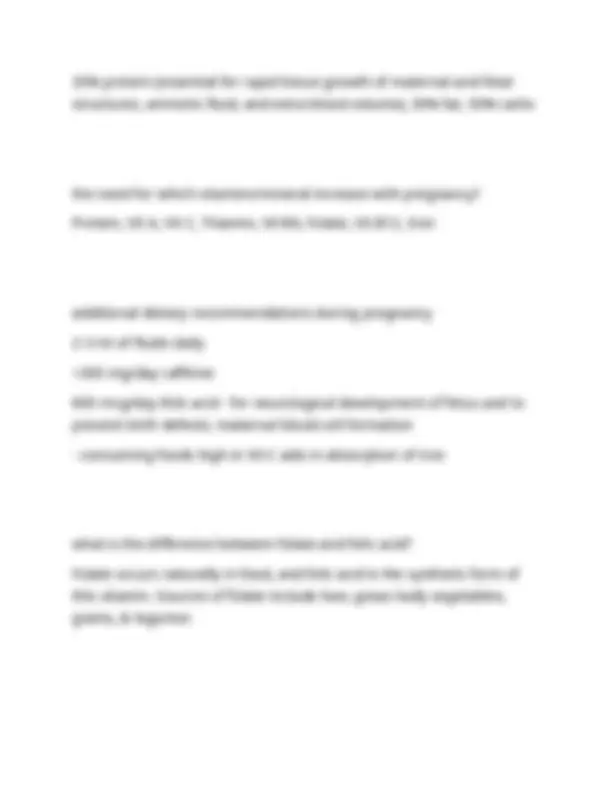


Study with the several resources on Docsity

Earn points by helping other students or get them with a premium plan


Prepare for your exams
Study with the several resources on Docsity

Earn points to download
Earn points by helping other students or get them with a premium plan
Community
Ask the community for help and clear up your study doubts
Discover the best universities in your country according to Docsity users
Free resources
Download our free guides on studying techniques, anxiety management strategies, and thesis advice from Docsity tutors
ATI NUTRITION EXAM STUDY GUIDE 2025-2026 WITH QUESTIONS AND ANSWERS|100% PASS
Typology: Exams
1 / 20

This page cannot be seen from the preview
Don't miss anything!













Function of iron it is responsible for hemoglobin formation/function, cellular oxidation of glucose, antibody production, and collagen synthesis Iron food sources what increased the absorption of iron? lean red meats, organ meat, egg yolks, whole grains, green leafy vegetables, beans, raisins, peanut butter Vit C increases absorption of iron (OJ, tomatoes) What factors influence the body's need for protein tissue growth needs quality of the dietary protein added needs due to illness pregnancy/lactation
What is the difference between complete and incomplete proteins? complete: generally from animals sources and contains all 9 essential amino acids incomplete: generally from plants (grains, nuts, legumes, fruits, vegetables) and do not contain all of the essential amino acids What is B12 and why is it important? What causes a deficiency? water soluble vitamin AKA Cobalamin
A,D,E,K - have potential for toxicity due to ability to be stored in body for long periods of time -stored in the liver and fatty tissues, and are eliminated much more slowly than water-soluble vitamins A: vision D: bone development E: protects cells from oxidation K: normal blood clotting Water soluble vitamins Vitamin C and B-complex -your body metabolizes what it can and flushes out the excess through pee C: iron absorption, antioxidant, tissue building B: cell metabolism, energy, neurological function (Thiamin, Riboflavin, Niacin, Pantothenic acid, Pyridoxine, Folate, Cobalamin) Vitamin D function: maintain serum calcium and phosphorus, aid in bone development
sources: fish, fortified dairy products, SUNLIGHT deficiency: low serun calcium, fragile bones, rickets B water soluble vitamin aka "thamin" function: muscle energy, GI support, CV support sources: meats, grains, legumes deficiency: Beriberi, altered digestion, CNS and CV problems CHO carbohydrate: organic compounds composed of carbon, hydrogen, and oxygen types: monosaccharides (glucose, fructose, galactose), disaccharides (sucrose, lactose, maltose), polysaccharides (starches, fiber) fuction: to provide ENERGY for the body *130 g/day needed to fuel the brain Low cholesterol diet avoid saturated and trans fats (red meat, full fat dairy)
indications: clients who have chewing or swallowing difficulties, oral or facial surgery, wired jaws soft (Bland, Low-Fiber) diet whole foods that are low in fiber, lightly seasoned, and easily digested -High fiber gas forming foods are excluded (fruits, veggies, beans, coarse breads/cereals) Indications: clints transitioning between full liquid and regular diet, acute infections, chewing difficulties, or GI disorder Mechanical Soft diet modified in texture to include foods that require minimal chewing before swallowing (ground meats, canned fruits, softly cooked vegetables) indications: limited chewing ability; dysphagia, porrly fitting dentures, edentulous (w/out teeth), surgery to head/neck/mouth, strictures of the intestinal tract Lactulose or lactose intolerant
Lactose intolerance occurs when the body is unable to breakdown all of the lactose (predominant sugar in milk) due inadequate lactase (enzyme that digests lactose into glucose and galactose) Lactose is contained in milk and dairy products such as cheese, yogurt, icecream, sherbert symptoms: abdominal distension, flatus, occasional diarrhea nursing concern: substitute calcium with other sources such as tofu, beans, and vegetables; in infants: substitute soy or casein hydrolysate formulas low sodium diet limit sodium to 1500-2000mg/day -benefits patients with cardiovascular risks including heart failure, hypertension, African-American ethnicity, and all middle aged and older adults. high fiber diet promotes normal bowel functioning and is associated with decreased risk factors for certain ancers My Plate diet: consume a minimum of 5 servings of fiber-rich fruits and vegetables and adequate fluid intake
Add cheese, peanute butter, chopper hard-boiled eggs or yogurt to foods Dips meat in eggs or milk and coat with bread crumbs before cooking Nuts and beans Albumin lab values and significance Indicates if body is absorbing enough protein Prealbumin: 17-40 mg/dL -used to assess critically ill clients who are at a higher risk for malnutition; reflects acute changes Albumin: 3.5-5 mg/dL -chronic measurement What does a complete cholesterol test measure? •Total cholesterol: this is the total amount of cholesterol in your blood. (should be <200 mg/dL) •Low-density lipoprotein (LDL) cholesterol: this is referred to as "bad" cholesterol and too much of it can lead to heart attack, stroke, and atherosclerosis. (should be <150 md/dL)
•High-density lipoprotein (HDL) cholesterol: this is referred to as "good" cholesterol because it helps remove LDL cholesterol from your blood and tranports it to the liver. (should be >60 md/dL) •Triglycerides: when you eat, your body converts the calories it doesn't need into triglycerides, which are stored in your fat cells. People who are overweight or diabetic or who eat too many sweets or drink too much alcohol can have high triglyceride levels. (should be <150 md/dL) Ca+ sreum calcium blood test: 9.0-10.5 mg/dL All cells need calcium in order to work. Calcium helps build strong bones and teeth. It is important for heart function, and helps with muscle contraction, nerve signaling, and blood clotting Deficiency: osteoporosis, tetany, Chvostek's and Trousseau's signs, ECG changes Excess: constipation, kidney stones Hemoglobin (Hgb) females: 12-16 g/dl males: 14-18 g/dl
deficiency: anemia, WBC disorders, recent/long term blood blood excess: dehydration, polycythemia vera, lung/heart disease BMI Body Mass Index normal/healthy weight: 18.5-24. overweight: 25-29. obese: 30+ morbidly ovese: > BMI = weight in lbs/height in inches/height in inches x 703 How many cal/g of energy to carbohydrates provide? Protein? Lipids? Carbohydrates: 4 cal/g Protein: 4 cal/g Lipids 9 cal/g RDA - percentages of major nutrients needed for adults Carbohydrates: 45-65% Protein: 10%
Fats: 20-35% (less than 10% from saturated fats) limit cholesterol to 300 mg./day consume <2300 mg of salt/day (1 tsp) fiber: 25 g/day women, 38 g/day men what are appropriate drinks for children/adolescents in sports Young athletes need to meet energy, protein, and fluid needs water, low-fat milk, and 100% fruit juices *carbonated beverages may result in deficiencies in vit C, roboflavin, phosphorous, and calcium Suggested introduction of foods from birth-12 months Birth- 4 months: breast milk (until 6 months) or formula (at 4 months) 4-6 mo: iron-fortified cereal 6-8 mo: vegetables, fruits 8-10 mo: strained meats, fish, poultry 9-12 mo: table foods (cooked, chopped,and unseasoned) 12 mo: cow's milk, eggs, cheese
How long should you store: fresh meat fish dairy products eggs fruits and vegetables pantry items canned goods fresh meat: 1-2 days at 40 degrees F or colder fish: 1-2 days at 40 degrees F or colder dairy products: cheese 3-4 weeks, milk 5 days eggs: 3 weeks in shell, 1 week hard boilded fruits and vegetables: 3-5 days; citrust fruits/apples, 1 week or longer pantry items: store in dry, dark place at room temp canned goods: 1 year or longer at room temp Salmonella cause; undercooked or raw meat, poultry, eggs, fish, fruit, dairy manifestations: HA, fever, abdominal cramping, diarrhea, N&V --- can be fatal!
Escherichia coli 0157:H cause: raw or undercooked meat, esp hamburger manifestations: severe abdominal pain and diarrhea Shigella cause: poor personal hygiene and improper hand hygiene food sources: dairy products and salads manifestation: diarrhea Listeria monocytonogenes causes: soft cheese, raw milk products, undercooked poultry, meat, seafood, vegetables manifestations: sudden fever, diarrhea, HA, back pains, abdominal discomfort *Can cause signifacant problems in pregnant clients, immunocompromised clients, and new borns; can lead to stillbirth or misscarriage of pregnant clients
What is tyramine? What can it cause? What are foods high in tyramine? a naturally occuring amine found in many foods that has hypertensive effects may cause clients taking MAO inhibitors to suffer a hypertensive crisis foods high in tyramine: aged cheese, smoked meats, red wines, pickled meats What is recommended weight gain during pregnancy? 1-4 lbs 1st trimester 2-4 lbs/mo 2nd & 3rd trimesters (for a total of 25-35 lb if normal weight client) If a client is breastfeeding, how many extra calories should they consume daily? 330 the 1st 6th months 400 the 2nd 6th months What is the recommended DRI of protein, CHO, and fats during pregnancy/lactation? Why is protein so important?
20% protein (essential for rapid tissue growth of maternal and fetal structures, amniotic fluid, and extra blood volume), 30% fat, 50% carbs the need for which vitamins/mineral increase with pregnancy? Protein, Vit A, Vit C, Thiamin, Vit B6, Folate, Vit B12, Iron additional dietary recommendations during pregnancy 2-3 ml of fluids daily <300 mg/day caffeine 600 mcg/day folic acid - for neurological development of fetus and to prevent birth defects; maternal blood cell formation